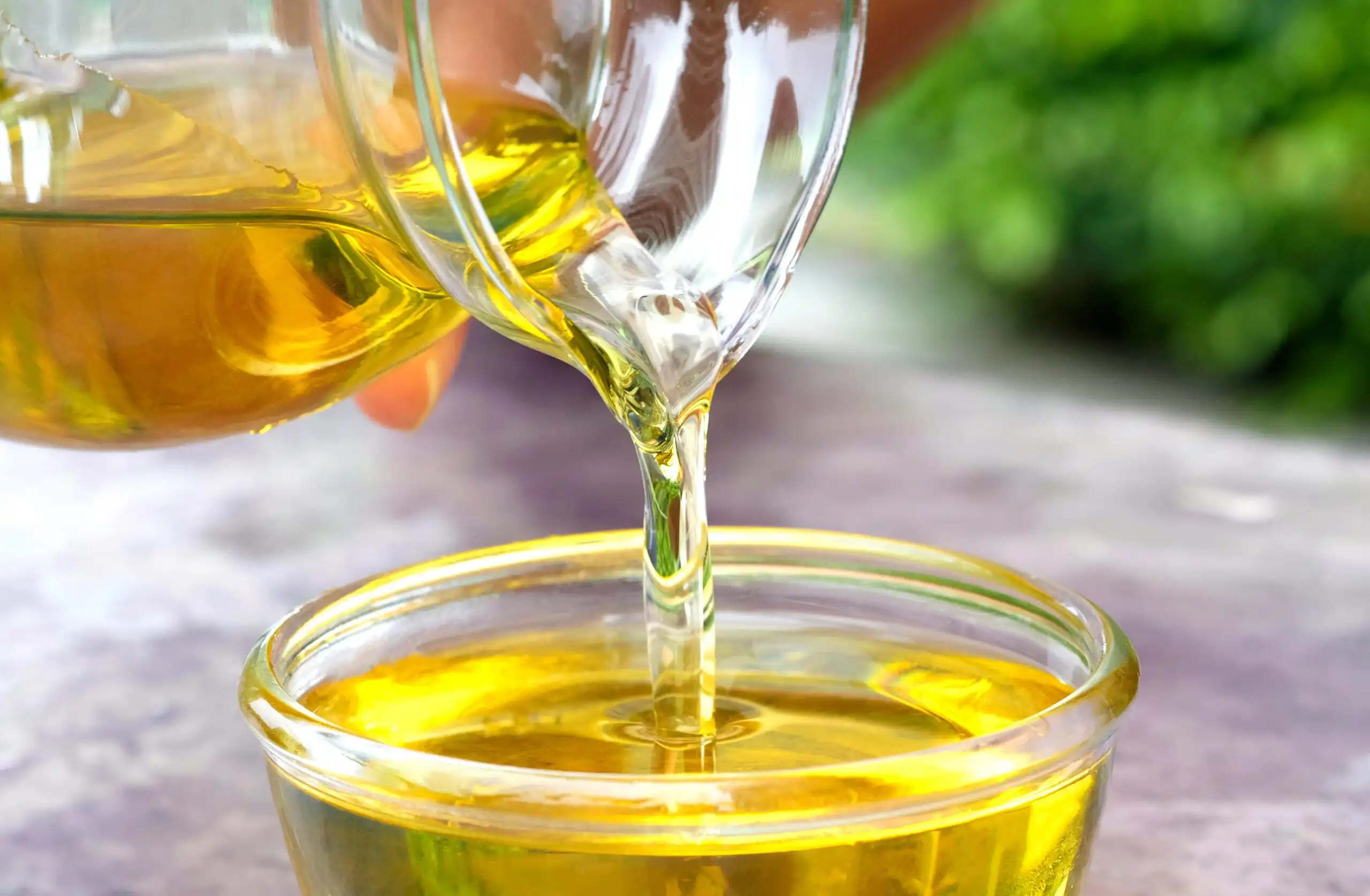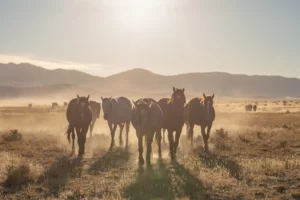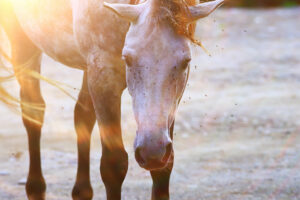Time and again, horse owners can be seen in winter “enhancing” their concentrate feed rations with generous amounts of oil. It is believed to provide more energy and promote a shiny, healthy coat. But what actually happens to the oil inside the horse?
The Digestion of Oil and Fat
All forms of oil or fat must be digested in the small intestine. This means that a digestive enzyme called lipase in the small intestine must break down these fats into their building blocks—fatty acids. Only these free fatty acids can be absorbed and utilised by the horse in a biologically effective way.
For lipase to function, the fat must first be emulsified—in other words, it must be made water-soluble. Since lipase is a water-soluble digestive enzyme, it cannot immediately process the floating “oil slick” on the watery contents of the digestive tract.
The emulsification of fat is carried out by bile fluid, more specifically by bile acids. These molecules have a fat-soluble end, which embeds itself into the fat, and a water-soluble end, which points outward. As the intestinal peristalsis stirs and breaks the fat into tiny droplets, the bile acids attach themselves to these droplets. Within seconds, they resemble little spiky balls—with the oil droplet inside and the water-soluble “arms” of the emulsifiers on the outside.
Only in this emulsified form can the fat droplets be attacked by lipase, broken down into fatty acids, and finally absorbed and utilised by the horse.
The horse does not have a gallbladder.
For this reason, all mammals that naturally consume a diet rich in fat, such as dogs and humans, have developed a gallbladder. This organ stores bile fluid, which is continuously produced by the liver and is only released into the small intestine when fatty food passes from the stomach into the intestine.
However, the horse naturally lacks a gallbladder because its digestive system is not designed for a fat-rich diet. When a well-intentioned portion of oil is added, there is not nearly enough bile available at once to emulsify and digest these fats.
And now several undesirable things happen in the horse’s digestive system.
1. The oil coats the entire food bolus with a fine layer of fat, which prevents other digestive enzymes from functioning properly. As a result, starch and proteins are not broken down and absorbed as they should be.
Instead, a significant portion of the concentrate feed passes into the large intestine, where it encourages the growth of the wrong types of microorganisms, such as lactic acid bacteria, which do not belong there. Additionally, undigested foreign fats that reach the large intestine can be toxic to the gut flora. The beneficial microbes responsible for digesting hay may partially die off as a result.
The feed ration has, in theory, been enriched with a large amount of energy (oil). However, in reality, the horse absorbs far less of it than if no oil had been added at all. This is because the presence of oil now prevents the proper digestion of starch, proteins, and cellulose.
2. Unlike many other animal species, the horse absorbs a certain amount of undigested foreign fats. These are initially stored in fat tissue, as the body tries to remove them from the bloodstream as quickly as possible.
These foreign fats are biologically unusable for the horse because they cannot be effectively broken down into fatty acids to be converted into the body’s own fat-based molecules. Instead, they are treated as waste and primarily excreted through the sebaceous glands in the skin.
This results in the horse developing an excessive shine—almost like a greased rind—because the foreign fats coat the individual hairs with a thin film. However, this shine has nothing to do with a healthy coat condition; rather, it is the body’s way of expelling waste through the skin.
It becomes clear that adding oil to feed is not beneficial; instead, it disrupts metabolism more than it helps. For this reason, it should be approached with great caution.

How to Provide Valuable Fatty Acids?
Horses can still benefit from essential fatty acids, particularly in winter, but these should be provided in a natural, easily digestible form. Instead of oil, oil-rich seeds are a much better choice. Suitable options include sunflower seeds, rosehip seeds, linseed, an occasional walnut, or the OKAPI Wild Seeds Mixture.
In the form of seeds, fatty acids reach the intestine in a more digestible state, allowing them to be effectively utilised by the body. The metabolism uses these fatty acids to build new cell membranes, steroid hormones, and other essential molecules.
Interestingly, the horse’s metabolism only uses fatty acids (as well as proteins) as an energy source in extreme cases of necessity. This process produces “dirty” energy, leaving behind a large amount of ketone bodies as waste, which then require effortful elimination by the body.
The horse’s metabolism primarily relies on sugar for energy production, not fat. This sugar is usually provided as slow-releasing energy from the cellulose in roughage. For this reason, it is far better to feed more hay instead of oil!
For more on this topic, see “Oily seeds – important support in winter” or watch our video “Oil Feeding – Sensible or Not?”.
- Linseed in Horse Feeding - 28. January 2025
- Organic Selenium and the “Rebound Effect”: Risks of Supplementing Selenium - 15. November 2024
- West Nile virus infections in horses - 10. September 2024





